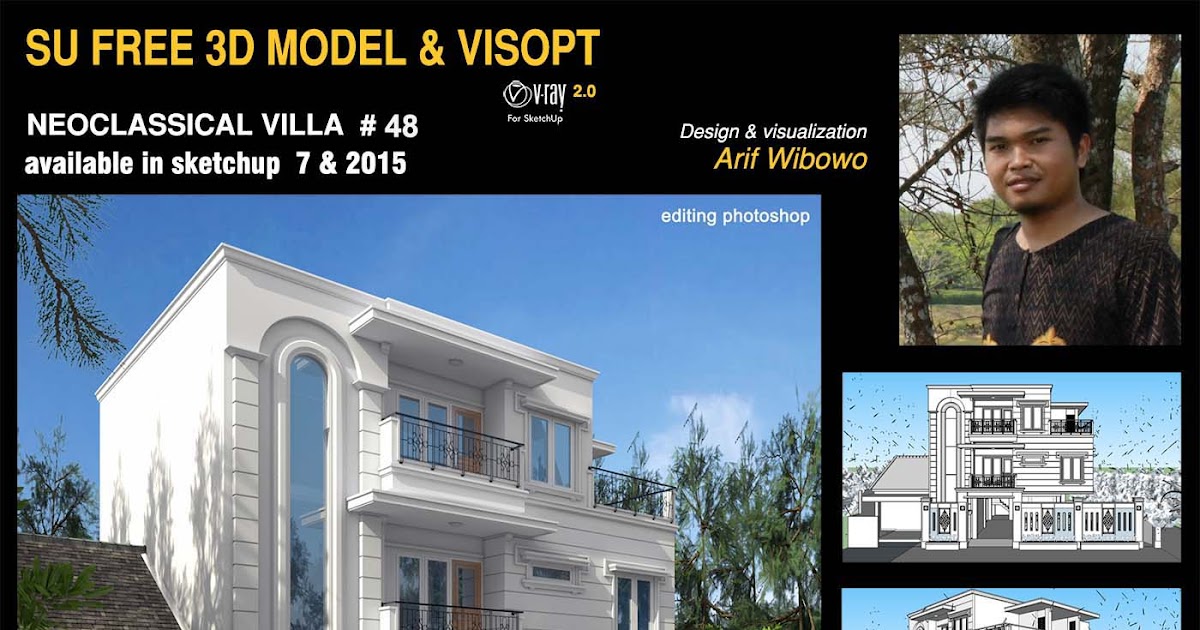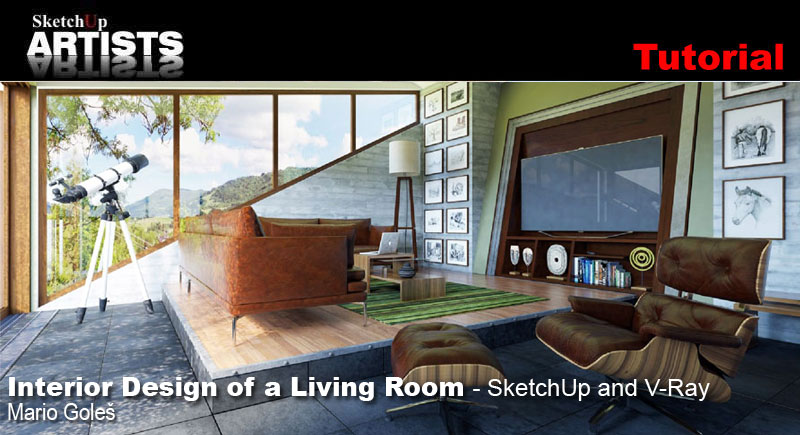

- #Vray for sketchup visopt download how to
- #Vray for sketchup visopt download Patch
- #Vray for sketchup visopt download free
We still have the same amount of light entering the scene, but it is bounced around more and this increases the overall brightness of the scene.Īt this point, you can adjust the ratio, color, etc of the lights, while getting a fast feedback on the lighting. Now, let's start with a high value for the Noise Thresholdsomething like 0. This way V-Ray will continue rendering until either the Noise threshold is reached or until the Max. Make the diffuse color of the material RGB, Let's also explore the balance between noise and render time.įor starters, set the Render time min to 0. In this case, we can make the override material brighter.


Once the materials are applied to the scene, it will brighten it up considerably.
#Vray for sketchup visopt download Patch
However, this will make the directly lit areas of the image, like the patch of sunlight, too bright, while indirectly lit regions will remain relatively dark. One is to increase the power of the lights. Since the scene looks too dark, we would like to brighten it a bit.
#Vray for sketchup visopt download free
Free Vray Exterior, Interior visopt Pluging Template File
#Vray for sketchup visopt download how to
Let's see how to brighten it up, while aiming at a quick preview render. We keep the resolution small x at this first step in order to save render time, while making changes to the scene. This way, we can start with a fast preview render. They require very little tweaking for most of the scenes and are a very good starting point. The default V-Ray Next settings generally work very well for still images. At the end, we will consider interior animation settings. Then, we will prepare the scene for a production render. With their help as a starting point, we will learn how to make quick render previews that can be used for light adjustments. First, we will go through the default V-Ray render settings that are optimized for a large variety of scenes. Adding a light to a single component, will add that light to all the components in the scene.Expand all Collapse all. Then, set a Color you prefer for a nighttime sky. Set the Color to a slightly darker purple and increase the Background value to 2. Turn on Interactive and lower your resolution to x for faster test rendering. Reshape this bloom and make it smaller for a more subtle effect so set the value to Set this to 2. Hitachi hn 46 hydraulic oil specificationsĮnable Bloom for a more photographic response to the light in the far window. Experiment with these controls to find a good color balance to your taste. Enable Exposure and set the Highlight Burn to about 0.īe careful not to go too low, as that could flatten the appearance of the image.Ĭolor Balance allows a more sophisticated way to control the color in the image. In the VFBenable Show corrections control also Force color clamping to show which areas of the image are blown-out.

To do the latter, in the VFBclick the Load image icon. You can continue on to the next steps with your own render or you can load the finished image as we have it. Now that we have a baseline look for the lighting, turn off the Material Overrideand watch the Interactive render to see the lighting with the proper materials in the scene. The Simple Portal is faster but the regular Portal look more accurate. If you compare the Simple portal light render to the previous regular Portal lightyou can easily see how the curtains are affecting the light coming into the room, as well as slightly less illuminated overall. The Simple type ignores all the objects behind it, effectively cutting a hole to let light in from your environment, while the regular Portal Light samples all the objects behind it including solid objects and those with transparent materials. The render updates to fill the room with a much more natural look of light coming in from the outside. Change the Colorand observe how the interactive render updates and fills the room with color. To adjust this, open the Asset Editorand in the Lights section, find the rectangle light. Next, we will make some portal lights to help light the room. In the Options rollout, you can see that the option Can be Overridden is off, so the Glass does not respond to the Material Override set for the rest of the scene in the render settings. To see how this has been set up, navigate in the Asset Editor to Materials. Notice that the scene has a Material Override that affects everything except for the glass to allow light to come in from outside. This tutorial is a companion to go along with the QuickStart video posted on our YouTube channel and available here. To follow this tutorial, you will need to have the V-Ray for SketchUp plugin installed. It will build off of the previous Exterior Lighting Quickstart and include a variety of V-Ray Lights for both day and night renders.īy the end, you will gain an understanding of the general lighting workflow for interiors in SketchUp. This tutorial covers the basics of lighting an interior scene using V-Ray in SketchUp.


 0 kommentar(er)
0 kommentar(er)
